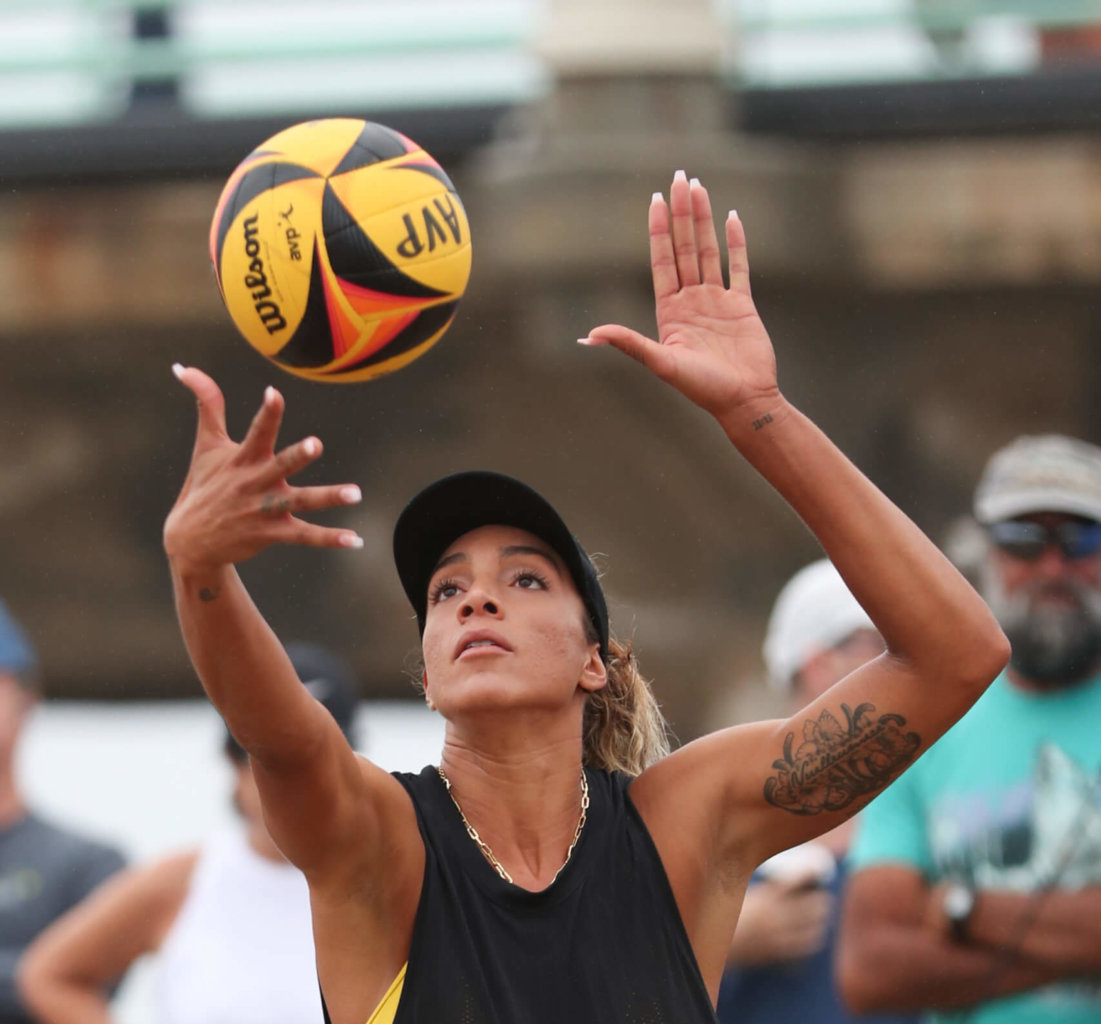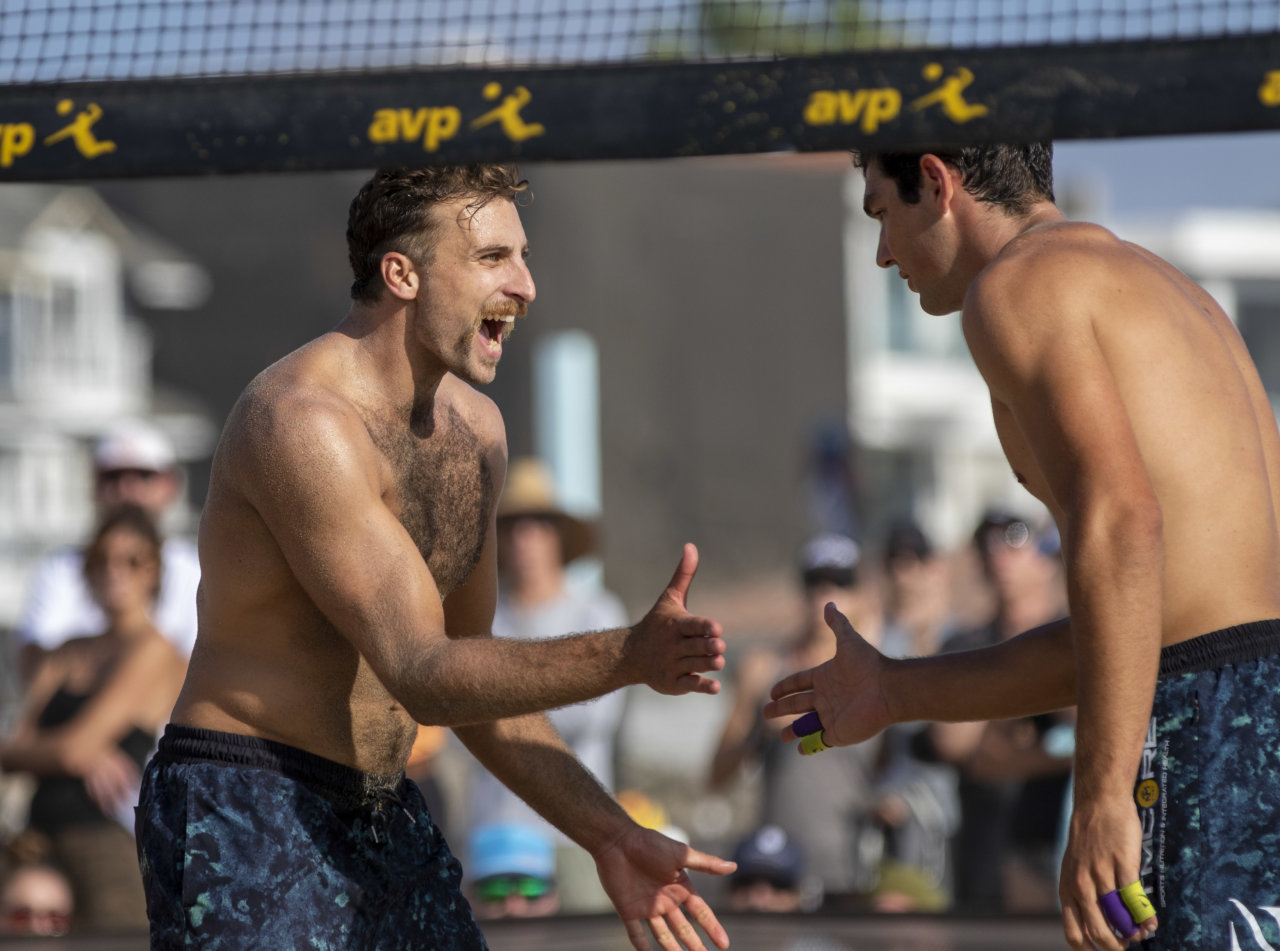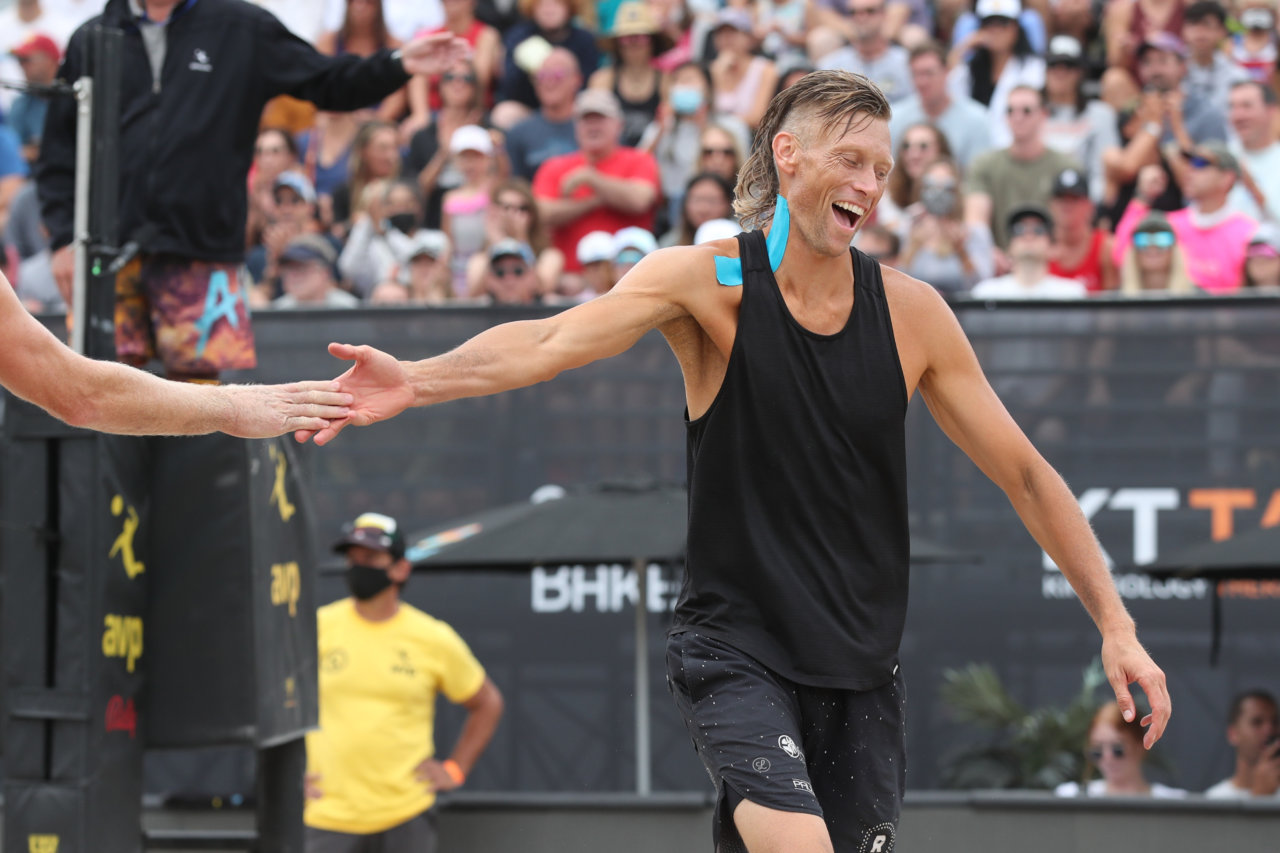Every January, the South Bay and Orange County beaches repopulate with AVP players. After a month or two of well-deserved hibernation, spending time with loved ones, and traveling, they’re ready to take on the new year.
Coming back is not always easy. Or pretty. One day in, your body is nearly wrecked from the effort (and presumed holiday cocktails/baked goods/mashed potatoes). Though many stay in the gym throughout the offseason, they don’t touch the sand for months. There is absolutely no way to replicate a sand workout sans sand. The all-important sand legs – the colloquial term for legs strong enough to withstand hours of trudging through deep, relentless sand – are elusive in those first two weeks. Going to say sand one more time just for kicks and giggles.

I don’t know when it was universally decided that the AVP athletes would reconvene in January, but we all do it. I moved here in January 2015 and was one of many who did the same. Every year since then, I’ve seen a slew of new players relocate to the South Bay to begin preseason. January is an experimental and exploratory time. Who’s on the sand? Who’s partnering with whom? Who came out in the afternoon for extra conditioning? It’s a bit of a gossipy time, as well.
Most beach volleyballers begin their preseason in the first week of the year regardless of their Tier, or level, within the sport. Those playing internationally (Tier 1) have roughly eight weeks before their first tournament. Those focusing on AVP events (Tiers 2-4) have historically been four months away from their first event. But Tiers 2-4 need more time and practice to improve, trying to catch up to the AVP winners and put themselves in contention for Sunday competition. It makes sense for them to begin anew with the turn of the calendar page.
Returning to form after an eight-week hiatus looks different for everyone. It depends on your Tier, whether you have a new partner or coach, and where you live. For the sake of this article, we’ll stick to SoCal.
Almost everyone begins practice on the Monday of the first full week of January. The first two or three weeks are often a mix of individual and team practices, all with the goal of getting back in shape and reacquainted with the game. Few days are spent practicing with other teams; preseason is drill-heavy, all about team chemistry and communication. You definitely don’t want to faceplant against April Ross because your legs are burning from the inside out with lactic acid.
This 2-4 week period is where new partners and/or coaches are doing the acquaintance bit, talking about set height and defensive patterns. After the first two weeks, when sand legs have returned and team chemistry is firing, teams start playing against each other, introducing more game-like drills and keeping score.

Most Tier 1 and 2 players have set teams by the beginning of preseason. They’ve done the song and dance before preseason commences for optimal training. If you’re in Tier 3 or 4, you’re lucky to have a partner at this stage. Most people are setting up practices with anyone and everyone.
Preseason is an audition period. You can play with as many as four different partners in a week. Because there’s plenty of time before the first AVP, it’s the perfect chance to play the field, trying your hand with varying styles of play, partners, and coaches. So whether you’re set with a partner and training for the FIVB, or you’re brand new and hardly know anyone, you’re likely to start training in January.
Practices are almost always in the morning. Even though Southern California is the land of perpetual sunshine and deliciously mild weather, winter mornings here hit different. I say this as a Midwesterner who went to college in Chicago; I used to walk 0.7 miles to the gym three times a week at 5:45 am in the Windy City in the dead of winter. I know cold.
But don’t underestimate spending two and a half hours outside in 45° weather with toes buried in cold, wet sand. Sometimes before the sun is even up. Yes, our bodies warm up eventually. But the toes… the toes never do. There’s no relief until your piping hot shower water slowly brings the frozen nubs back to life, sending stinging sensations from your toenails to your shins. It’s a beautiful disaster. Clearly, I have some near-frostbite PTSD. Moving on.
After practice, most return home for a shower and lunch. In my experience, afternoons are where the difference in Tiers is most evident.
Those in Tier 1 – the Olympians and consistent AVP winners – are just beginning their day of volleyball. Many schedules look a lot like Alix Klineman’s Day in the Life – weights, film, massage, treatment, sauna, etc. The whole day is in support of volleyball goals. It’s a ton of work, but it’s a blissful focus on the process.
Many Tier 2 athletes are also able to have that focus. Tier 2 players are AVP staples, those who make all the Main Draws but aren’t winning tournaments. Some of them have the right sponsorships to give them the freedom to concentrate on their game. But living in Southern California is not cheap, and a handful need support from other places to pursue their dream. Side hustles should be flexible, part-time or gig-based, and understanding of volleyball. We’re all here for the game. It reigns supreme.

Tiers 3 and 4 – Qualifier players on the cusp, those who are still working for their first Main Draw, and the people who are just getting into beach volleyball – definitely require another job. I’ve been a nanny, personal assistant, nutritionist, chef, and freelance writer. Others are accountants, marketing agents, coaches, club owners, or working remotely for family or local companies. Their goal is still volleyball, but without an influx of money coming from the sport, Tiers 3 and 4 spend more time working than volleyball adjacent endeavors. It’s the Catch 22 of trying to make it big.
With that said, athletes with jobs find the time. When I was in my prime playing days, I went to the gym three days a week, saw a sports psychologist once a week, and met with my coach and partner every couple of weeks. I had nutritionist appointments, stretching sessions, sports massages, personal trainer workouts, chiropractor appointments, and conditioning sessions. This in addition to the four or five two-hour practices per week. And it all started about this time of year.
January is when we figure out all the details. Do I play well with so and so? Is this recommended coach as good as I’ve heard? Does my new job fit in with my practice schedule? It’s a month of renewal, excitement, and crazy hard work. The balance is half the battle – how to work volleyball back into your life without losing it.
For most, shaking off the rust is the hardest part. Not only do you need to get your legs and lungs up to speed, but you also need to remind your brain how to play. A lot of January is spent on small details like arm swing, passing stance, and setting. It’s menial work, but vital to the overall success of the season. The minutiae can be brutal on your mental health; breaking down the game like that can make you feel like a neophyte. As a result, January is also a great time to start meditating and journaling, giving your brain a chance to breathe.
But that breakdown of the game, the dissecting and perfecting, is so worth it. Come February, you’re ready for anything.